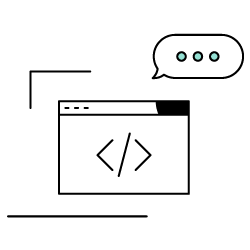The HTTP status indicates the response of the server to a request made by a client. The first digit of the codes indicates to which of the 5 families of status codes it belongs: 1xx informational response, 2xx successful, 3xx redirection, 4xx client error and 5xx server error.
In this infographics, we have selected 15 status codes that stand out from the others, either through their importance or through their unusual nature.

Feel free to share on your website
Retranscription
The Classics
404 Not Found: The requested resource can’t be found anywhere on your website.
301 Moved Permanently: All the requests are redirected to a new URL.
500 Internal Server Error: This is a general error message displayed when the server encounters an unexpected condition.
The Advanced Statuses
410 Gone: This status simply means that your website has nothing to provide. The resource you’re asking for has disappeared and will not reappear anytime soon.
307 Temporary Redirect: This status redirects requests to a new URL, but says that future requests can continue to use the old URL. It replaces the old 302 temporary redirect, but unlike 302, it requires the request to the new URL to be exactly the same as the original one.
451 Unavailable For Legal Reasons: This reference to the novel Fahrenheit 451 just means that the content can’t be provided for, well, “legal reasons”, but doesn’t take a stand on whether the content exists or not. For example, some sites prefer serving a 451 instead of becoming GDPR compliant.
The Funny Statuses
418 I’m a teapot: In 1998, this code was one of the April Fools’ jokes made by the IETF organization. This code should be returned by teapots requested to brew coffee.
420 Enhance Your Calm: This unofficial status was returned by the initial version of the Twitter Search and Trends API to tell users to calm down and stop making so many requests! (Later versions use a more standard 429 Too Many Requests.)
508 Loop Detected: The server was taken in an infinite loop! After spending some time going around in circles in the meanders of your redirects, it is now informing you of the problem.
The Successful Statuses
200 OK: The HTTP request was successful.
201 Created: The request has been successfully achieved and a new resource has been created.
202 Accepted: The request has been accepted but not processed yet.
The Failures
401 Unauthorized: The requested authentication has failed or hasn’t been provided yet.
403 Forbidden: The server is refusing to respond. It might be because you don’t have the right permissions or because you’re trying to do a prohibited action.
502 Bad Gateway: The server received an invalid response from the upstream server.

